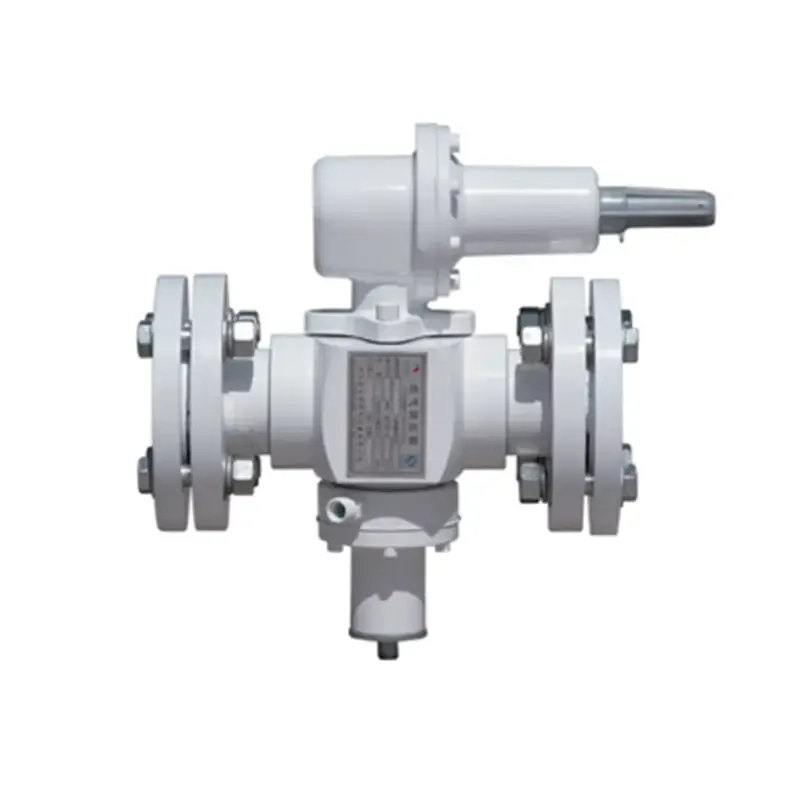
Dec . 09, 2024 15:24
Back to list
صمام تنظيم ضغط الغاز
The Importance of Gas Pressure Regulating Valves in Modern Systems
Gas pressure regulating valves (GPRVs) play a crucial role in various applications that involve the transportation and use of gases. These valves ensure that the pressure of gas delivered to a system remains within safe and specified limits, which is essential for both safety and efficiency. This article delves into the working principles, types, applications, and significance of gas pressure regulating valves in modern systems.
Understanding Gas Pressure Regulating Valves
A gas pressure regulating valve is a device designed to control the pressure of gas in a pipeline system. Its primary function is to reduce and maintain the high inlet pressure of gas to a lower and more usable outlet pressure. This is critical because many gas appliances and systems are designed to operate at specific pressure levels. If the pressure exceeds these levels, it can lead to equipment failure, unsafe operating conditions, or even catastrophic incidents.
The operation of a GPRV typically involves a mechanical or electronic mechanism that adjusts the flow of gas based on the desired output pressure. Most valves have a spring-loaded diaphragm system that responds to changes in outlet pressure. When the outlet pressure drops below a predetermined level, the valve opens to allow more gas into the system, and when the pressure exceeds the set point, the valve closes partially to reduce flow.
Types of Gas Pressure Regulating Valves
There are several types of gas pressure regulating valves, each serving different functions and applications
.
2. Two-Stage Regulators These are used where very accurate pressure control is necessary. They first reduce the pressure to an intermediate value and then to the desired outlet pressure, providing better stability and less fluctuation in output pressure.
صمام تنظيم ضغط الغاز

3. Electronic Regulators With advances in technology, electronic or digital pressure regulators have emerged. These devices use sensors and microprocessors to provide precise pressure control, often allowing for adjustable set points and automated systems.
Applications of Gas Pressure Regulating Valves
Gas pressure regulating valves are commonly used in various sectors, including
- Residential and Commercial Heating GPRVs control the natural gas supplied to furnaces and water heaters, ensuring safe and efficient operation. - Industrial Processes Many manufacturing processes utilize gases that require precise pressure control, helping to maintain process integrity and ensure safety. - Gas Distribution Systems In gas transmission and distribution networks, GPRVs are essential for managing pressure levels, preventing damage to pipelines and equipment. - Automotive Applications Some vehicles utilize compressed natural gas (CNG) or liquefied petroleum gas (LPG) systems that require regulated gas pressure for optimal engine performance.
The Significance of Gas Pressure Regulating Valves
The importance of gas pressure regulating valves cannot be overstated. They not only ensure safety and efficiency in gas usage but also help in achieving regulatory compliance. In many regions, strict regulations govern the safe use of gas, and maintaining proper pressure levels is a critical component of these regulations.
Moreover, as the world moves towards cleaner energy sources and greater reliance on natural gas, the demand for reliable and efficient gas pressure regulating valves grows. They are vital in supporting the transition towards more sustainable energy practices while maintaining safety and efficiency in gas distribution and consumption.
Conclusion
In conclusion, gas pressure regulating valves are essential components in a wide array of applications involving gas handling and distribution. Their ability to maintain safe operating pressures ensures the functionality and safety of various systems, from household appliances to large-scale industrial processes. As technology continues to advance, the development of more sophisticated regulating valves will only enhance their importance in modern gas management systems.
Next:
Latest news
-
Safety Valve Spring-Loaded Design Overpressure ProtectionNewsJul.25,2025
-
Precision Voltage Regulator AC5 Accuracy Grade PerformanceNewsJul.25,2025
-
Natural Gas Pressure Regulating Skid Industrial Pipeline ApplicationsNewsJul.25,2025
-
Natural Gas Filter Stainless Steel Mesh Element DesignNewsJul.25,2025
-
Gas Pressure Regulator Valve Direct-Acting Spring-Loaded DesignNewsJul.25,2025
-
Decompression Equipment Multi-Stage Heat Exchange System DesignNewsJul.25,2025

